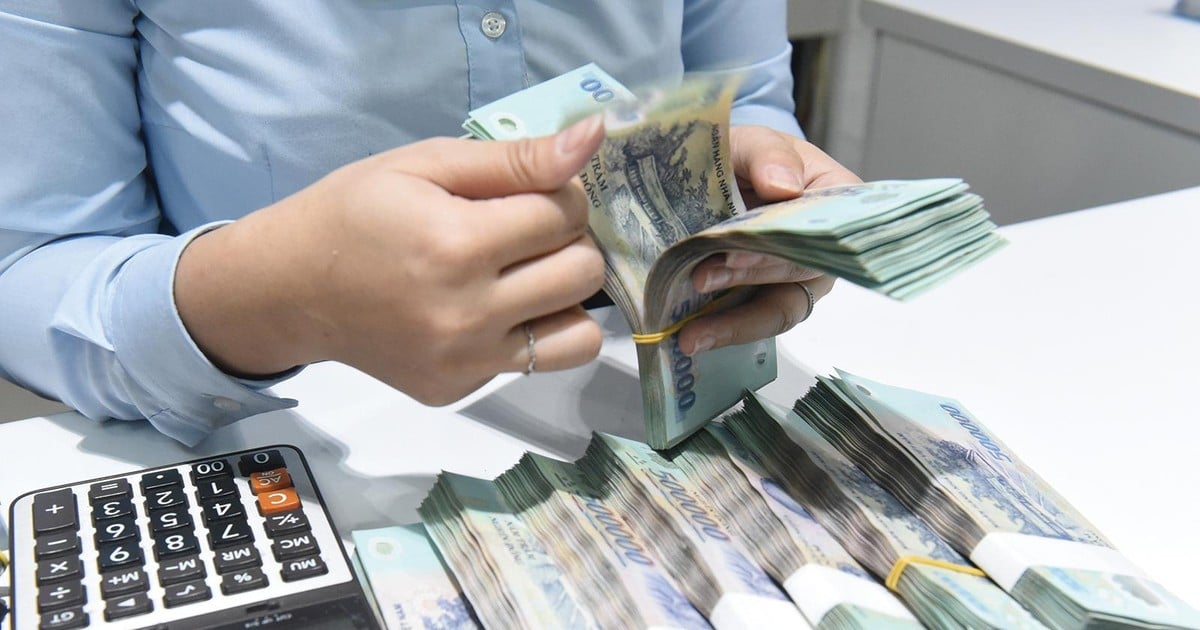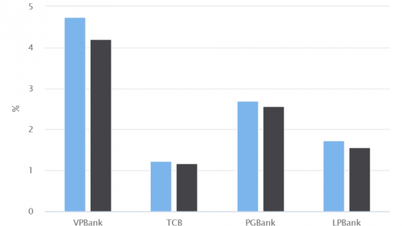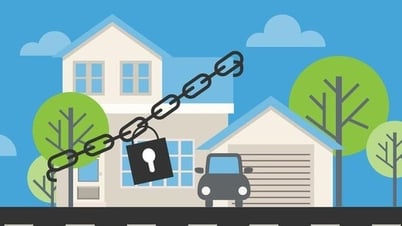According to the report of the Vietnam Banking Association, as of September 2023, there were about 84 credit institutions nationwide implementing consumer credit activities. The total outstanding loans to the economy were about VND 12,749 trillion, of which consumer credit of the entire system reached about VND 2,703 trillion, accounting for 21.2% of the total outstanding loans to the economy.
Of which, the estimated outstanding consumer loans of financial companies are VND134,279 billion, accounting for about 5% of the outstanding consumer loans of the entire system. This can be considered an effective capital channel for people in society.
Mr. Nguyen Quoc Hung, Vice Chairman and General Secretary of the Vietnam Banking Association, said that in recent times, to help people easily access loans, especially in the field of loans for personal life and consumption, thereby limiting black credit and universalizing comprehensive national finance, credit institutions have actively implemented many measures to improve their operations and increase outstanding credit as approved by the State Bank of Vietnam (SBV).

Currently, there are many groups of people inviting each other to "default on debt" spreading on social networks, causing many consequences for credit institutions but they are not handled... (Photo: DT)
For example, controlling and improving credit quality, reducing costs, gradually increasing capital efficiency, reforming administrative procedures, diversifying product portfolio, expanding network, especially in remote areas...
However, currently, the domestic economic situation is facing many difficulties and the global economy is evolving in a complex and unpredictable manner, leading to many challenges for lending activities in general and consumer lending in particular with low growth rates. By the end of September 2023, outstanding consumer loans in the entire system only increased by about 1.53% compared to the end of 2022 (a very low increase compared to the past 5 years).
In addition, the bad debt ratio in consumer credit throughout the system tends to increase (about 3.7% of total outstanding consumer credit, while from 2018 to 2022, this bad debt ratio was only above/below 2%), even the bad debt ratio of financial companies is at risk of increasing by over 15%, many companies are in a difficult situation, even losing money due to having to set aside high provisions for bad debt risks.
Nguyen Quoc Hung explained that in addition to the objective factors and common difficulties, there are also subjective and very dangerous factors that have not been dealt with yet, such as customers intentionally not paying their debts, the previous person advising the next person not to pay their debts, even when company officials come to collect debts or remind them to pay their debts, they oppose, denounce, and slander the officials as using aggressive measures to collect debts to the government;
In particular, groups of people inviting each other to "default on debt" are rampant on social networks, causing many consequences for credit institutions but are not handled...
“All of the above make debt collection activities, especially consumer credit debt, of credit institutions very difficult. Some credit institutions are forced to proactively cut down on their consumer loan portfolios to avoid further bad debt,” said Mr. Hung.
Meanwhile, Mr. Dao Minh Tu, Permanent Deputy Governor of the State Bank of Vietnam, said that lending for living needs and consumer credit is a potential field.
In developed countries, the rate of consumer credit is high. In Vietnam, when economic conditions and people's incomes are increasing, surpassing the threshold of developing countries, consumer loans and consumer lending are very objective and necessary needs of society.
“Consumer lending not only meets people’s spending needs but also contributes to stimulating demand, supporting economic growth and reducing the scale and impact of black credit,” said Mr. Tu.
To manage consumer credit activities, control and limit bad debts, and improve credit quality of credit institutions, the State Bank has recently implemented many solutions.
For example, completing the system of legal documents to create favorable conditions for credit institutions to provide consumer loans; issuing regulations on disbursement limits and risk coefficients for loans for living purposes to effectively manage credit quality as well as control the purpose of customers' loan use.
At the same time, strengthen inspection and supervision of consumer credit activities to promptly detect, correct and warn credit institutions about risk issues.
The State Bank of Vietnam (SBV) leaders said that the handling and recovery of bad debts of credit institutions, especially financial companies, is facing many difficulties. Many companies are in a difficult situation, even suffering losses due to the high risk provisions.
Bad debt increases, in addition to objective factors and general economic difficulties, also have subjective factors such as customers intentionally not paying their debts, forming "debt default" groups on social networks, opposing and slandering debt collection officers, negatively affecting the image and reputation of banks and financial companies, and greatly affecting the psychology of debt collection officers.
Mr. Tu emphasized that this is an issue that the State Bank is very concerned about, how to maintain the growth of credit, contribute to improving people's lives, prevent black credit, consolidate and continue to enhance the confidence of the market - people - borrowers.
Source


![[Photo] Prime Minister Pham Minh Chinh chairs conference on anti-smuggling, trade fraud, and counterfeit goods](https://vphoto.vietnam.vn/thumb/1200x675/vietnam/resource/IMAGE/2025/5/14/6cd67667e99e4248b7d4f587fd21e37c)

































































































Comment (0)